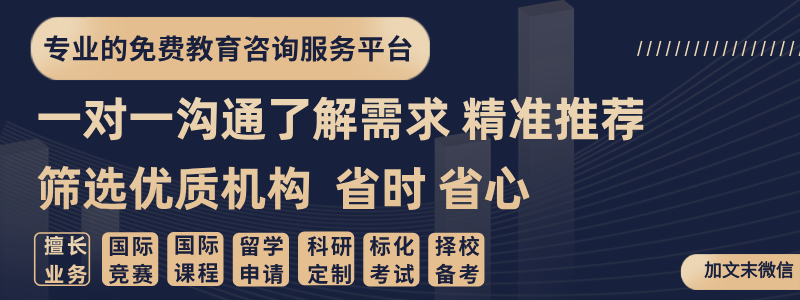WSDA新賽季,秋季賽十月第一場線上賽(10月21日&22日),還有一個(ge) 月就要開始了,不知道大家是否有準備起來,不過記得報名哦~ 這樣隨著比賽日期的逼近,更能激發大家的潛力和準備意識。
那我們(men) 今天就為(wei) 大家帶來第一章幹貨滿滿的Junior賽製,即興(xing) 辯論立論發言(備稿辯題及即興(xing) 辯題)相關(guan) 建議。
不要忘記報名十月第一場(10月22日)的WSDA Junior即興(xing) 辯論比賽,來小試牛刀一下嘛?
01明確主題和立場
1. 在發言開始時,明確表明你的立場是正方還是反方,以及你要辯論的主題。
2. 提供簡短的引言,清楚概括辯題。
?例子君上線:拿我們(men) WSDA Junior十月份的備稿辯題來舉(ju) 個(ge) 例子。
如果我是正方,我的開頭就可以這樣build:
I affirm with the resolution: Technology increases people’s quality of life. We have three contentions under our side, which are _______ , ________ , _________ .
因為(wei) 是備稿辯題,大家可以盡量提供具體(ti) 的例子和數據支持你的論點,但並不是必須的。
02辯論結構
和我們(men) 之前說的引言一樣:對於(yu) 辯題 "應該實施更嚴(yan) 格的環境保護政策",引言可以包括指出全球環境問題的緊迫性和提出自己支持更嚴(yan) 格政策的觀點。
正方觀點:如果你支持更嚴(yan) 格的環保政策,你可以列出空氣汙染、氣候變化和生態係統破壞等方麵的主要論點。
反方觀點:反方可能會(hui) 指出環保政策可能會(hui) 增加企業(ye) 成本,導致失業(ye) 率上升,以及政府過度幹預等觀點。
03論點構建
在一場辯論比賽中,論點是至關(guan) 重要的。論點是辯手要傳(chuan) 達的核心思想和觀點,它們(men) 不僅(jin) 是整個(ge) 辯論的基礎,還是決(jue) 定辯手勝負的關(guan) 鍵因素。
論點是辯手在辯論中要捍衛或反駁的立場的基石。它們(men) 代表了辯手的核心主張,決(jue) 定了他們(men) 的方向和策略。一個(ge) 清晰、有力的論點能夠為(wei) 辯手提供堅實的理論基礎,使他們(men) 能夠更好地闡述和支持自己的觀點。
與(yu) 此同時,任何一個(ge) 論點在辯論比賽中引導整個(ge) 討論的發展。辯手通過論點來引導辯論的方向,為(wei) 自己的觀點建立邏輯框架,同時也為(wei) 對手提供了反駁的對象。論點的質量和邏輯性將直接影響辯論的深度和複雜度。
論點構建的相關(guan) 建議如下 ⬇️
01開門見山
辯題 "是否應該取消學校暑假",你的主要論點可以是 "取消學校暑假將有助於(yu) 提高學生的學術表現"。
02邏輯性
確保你的論點之間沒有邏輯矛盾。例如,如果你的一個(ge) 論點是 "學生需要更多學習(xi) 時間",另一個(ge) 論點不應該是 "學生需要更多休息時間"。
03舉(ju) 例和數據
支持論點可以包括具體(ti) 的例子和數據。例如,你可以引用研究數據來顯示取消學校暑假與(yu) 學術成績的提高有關(guan) 。
04引用權威
如果有教育專(zhuan) 家或研究機構的觀點支持你的論點,可以引用他們(men) 的研究或言論。
04引用證據
選手可以通過在備稿辯題以下方式來幫助自己的立論發言更加完整。
1. 提前準備一些常見領域的證據,如教育、醫療、環保等,以備不時之需。準備一些通用的例子、統計數據或引用,適用於(yu) 不同的辯題。
2. 邏輯推理:使用邏輯推理來支持你的論點,例如,通過解釋因果關(guan) 係或潛在的影響。
3. 利用常識:利用通用知識和常識來支持觀點,如指出吸煙與(yu) 肺癌之間的關(guan) 係。
05回應對手
那麽(me) 我們(men) 在聽到了對方論點時,可以如何回應對手呢?
1/ 強調漏洞:如果對手提出取消學校暑假可能導致學生失去休息時間的觀點,你可以指出他們(men) 未考慮到學生可以在其他時間休息,或者學生可以通過更好的時間管理來平衡學業(ye) 和休息。
2/ 提出反駁:對於(yu) 反方的觀點,例如取消學校暑假可能會(hui) 導致學生失去社交機會(hui) ,你可以反駁說學生可以通過其他方式社交,例如參加夏令營或社區活動。
NEXT
那麽(me) 下麵是例子君對備稿辯題寫(xie) 出來的兩(liang) 份example case,大家可以作為(wei) 參考。
可以通過裏麵的結構,來整理自己更喜歡的方式來辯論。
Pro Sample Case正方立論發言參考稿
I firmly affirm with the resolution. Technology increases people’s quality of life.
Contention 1. Human wellbeing
Technology indeed increases people's quality of life by three ways.
Subpoint a. Healthcare
Technology has revolutionized healthcare. Advanced medical equipment, telemedicine, and medical databases have improved diagnosis and treatment. This means faster access to medical care, early disease detection, and ultimately, longer and healthier lives.
Subpoint b. Education
Technology fosters education. Online courses, interactive learning platforms, and educational apps have democratized access to knowledge. This not only enhances our skills and employability but also promotes lifelong learning, enriching our lives intellectually.
Subpoint c. Safety
Technology has improved safety. Advancements in transportation, like autonomous vehicles and enhanced safety features in cars, have reduced accidents. In addition, home security systems and medical alert devices provide peace of mind, particularly for the elderly and vulnerable.
Contention 2. Convenience
Technology enhances our daily lives through convenience. Smartphoness have become indispensable tools, connecting us to information, entertainment, and each other. With just a few taps, we can order groceries, hail a ride, or book a flight, making our lives more efficient and enjoyable.
For all these reasons above, technology is a boon to humanity. It enhances healthcare, provides convenience, facilitates education, and improves safety, all contributing to a higher quality of life for individuals and society at large.
Con Sample Case反方立論發言參考稿
I firmly negate with the resolution. Technology increases people’s quality of life.
Contention 1. Mental Health
There is a growing concern about the negative impact of technology on mental health. Excessive screen time, social media addiction, and cyberbullying have led to increased stress, anxiety, and depression among individuals, especially young people. This challenges the notion that technology unequivocally improves our lives.
Contention 2. Severe harms
Subpoint a. job displacement
The rapid pace of technological advancement often results in job displacement. Automation and artificial intelligence can lead to unemployment and economic inequality, causing distress and a lower quality of life for those affected.
Subpoint b. Privacy Concerns
The ubiquitous nature of technology and the data it collects can infringe upon personal privacy. Surveillance, data breaches, and identity theft erode our sense of security and well-being.
Subpoint c. Decline in essential life skills
The overreliance on technology can lead to a decline in essential life skills. For instance, GPS navigation might make our lives more convenient, but it also diminishes our ability to read maps and navigate without assistance.
For all these reasons above, it is essential to recognize the potential harms it can inflict on mental health, employment, privacy, and the development of critical life skills.
















評論已經被關(guan) 閉。